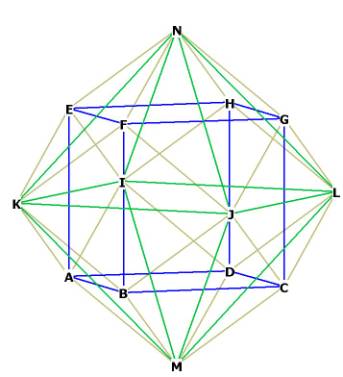|
(2016
premidterm assignment) Model Student Midterm answers 2016 (Index) Essay 1: Compare, contrast, and evaluate Narratives of the Future |
 |
Tom
Britt
20
February 2016
A Gift to the Dead and a Warning to the Living
Typically, when authors pen “literature of the future,” what they are
actually writing about are the events of the present and the anxieties that
political, economic, and environmental circumstances instill in humanity. As
past student Zach Mayfield states in his essay “The Beat Goes On” in reference
to the Book of Revelation, “it was during a time when Christians were being
suppressed by the Roman empire” that the ideas written in that biblical text
came to life. In order to ease their chagrin, an apocalyptic fantasy was crafted
in which this physical world, full of pain and unfairness for the Christian
faithful, would melt away and be replaced by a New Jerusalem. This cyclical
theme of the destruction of the current, less-than-ideal system and replacement
with the better, sublime existence is not exclusive to Revelation and can be
seen in numerous places in the Bible, including God’s destruction of the Earth
in the time of Noah and the decimation of the cities of Sodom and Gomorrah. The
works we have examined thus far in this course seem to share similar ideas,
albeit with their own differences and messages, and I would like to explore the
motif of cyclical societal evolution as a running theme in futuristic
literature.
On the other hand, in Octavia Butler’s
Parable of the Sower, we are shown
that it is possible for texts to not focus solely on an apocalyptic/creation
narrative, but also have the capability of weaving evolutionary themes in, as
well. Butler’s novel has many parallels to the creation story in the Bible’s
Genesis, with Lauren’s gated neighborhood bearing similarities to the Garden of
Eden and her access to her father’s library resembling the fruit of the Tree of
Knowledge. The more Lauren learns of the state of the world and the people in
it, the more it becomes increasingly apparent that she will be, by choice or by
necessity, cast out of her safe haven and forced to toil along her road of
pilgrimage to her own personal Mecca. Her notion that “God is change”
additionally bolsters this theme of cyclical creation and destruction. The
obvious difference, in this case, is that Lauren is more of the savior or
prophet archetype, with the inception of her new religion, Earthseed, and is not
at all responsible for the ruin and ejection from her oasis of a community,
unlike Adam and Eve.
Likewise, in Terry Bisson’s “Bears Discover Fire,” the idea that bears in
the southern United States have learned to create, harness, and manipulate fire
presents an evolutionary narrative in the sense that animal existence has
changed and eliminated the taxing need for hibernation. While it does not
initially seem so, human beings in the story must also adapt to this
never-before-seen ability of their creature counterparts, dealing with bears
ostensibly camping on highway medians and blaming the animals for fires that
envelope residential homes. Fire has always symbolically represented the
embodiment of human progress, and the fact that an organism lower on the food
chain than humanity has attained the ability to handle it shows that this planet
that sometimes seems so stagnant is actually changing and evolving constantly in
subtle yet weighty ways.
 |
 |
 |
